
Lead Sampling of Drinking Water Required for California Schools
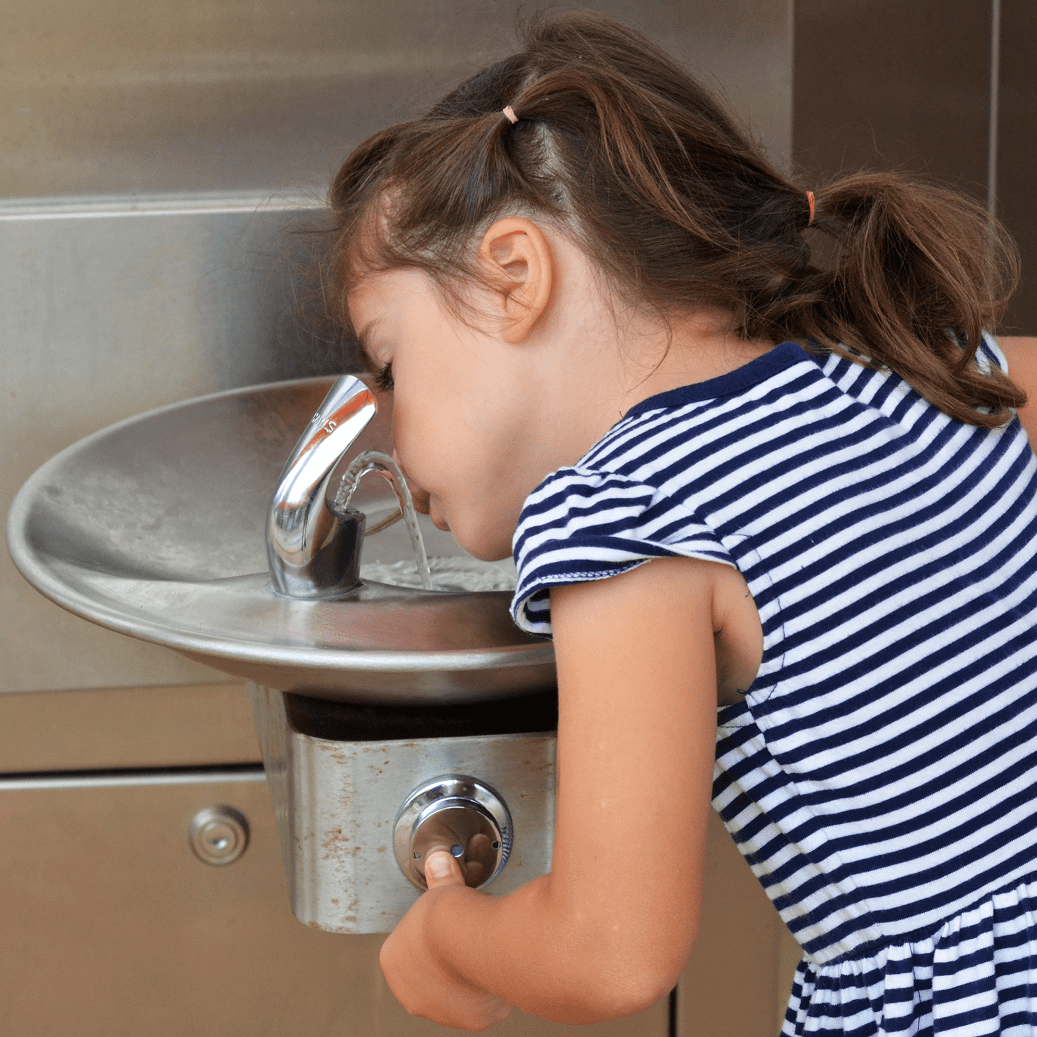
Written by: Joe Mangiardi, NES, Inc.
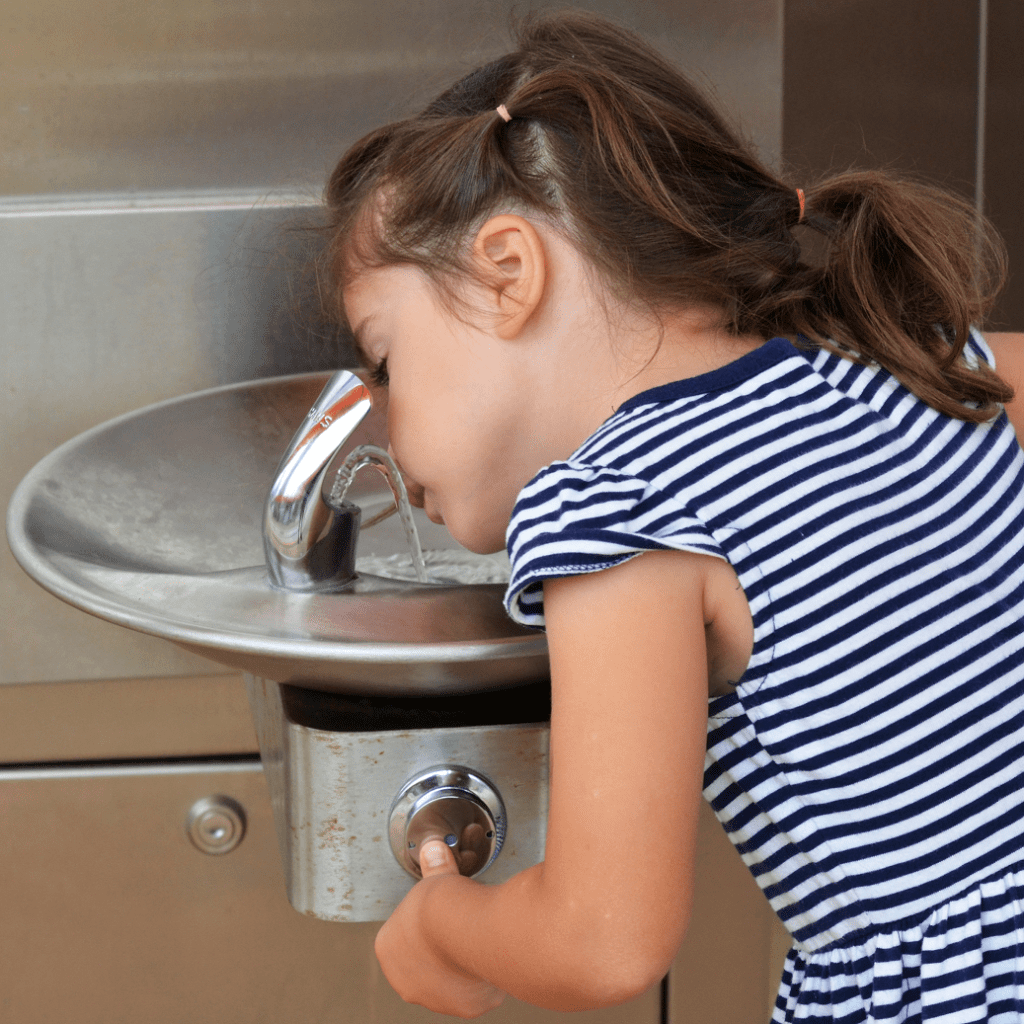 Public schools in California are now required to perform lead sampling of fountains/faucets on the schoolsite; young children are particularly at risk when exposed to lead.
Public schools in California are now required to perform lead sampling of fountains/faucets on the schoolsite; young children are particularly at risk when exposed to lead.
AB 746 Mandates California Schools to Test for Lead
With summer ending and millions of students heading back to school, it is relevant to note that, as of January 1, 2018, many California schools must perform lead sampling of drinking water that is provided to students. California Assembly Bill 746 (AB 746), which created Section 116277 of the California Health and Safety Code (HSC 116277), was signed into law on October 13, 2017 in the enduring wake of the lead-contaminated drinking water crisis in Flint, Michigan (HSC 116277 simultaneously sets the date of its repeal as January 1, 2020).
HSC 116277 requires that “A community water system that serves a schoolsite of a local educational agency with a building constructed before January 1, 2010, on that schoolsite shall test for lead in the potable water system of the schoolsite on or before July 1, 2019.” HSC 116277 defines a local educational agency as a “school district, county office of education, or charter school located in a public facility.” Water fountains/faucets that must be tested are any used for drinking or the preparation of food.
View and download the below two-page RCAC brochure about lead testing in schools here.
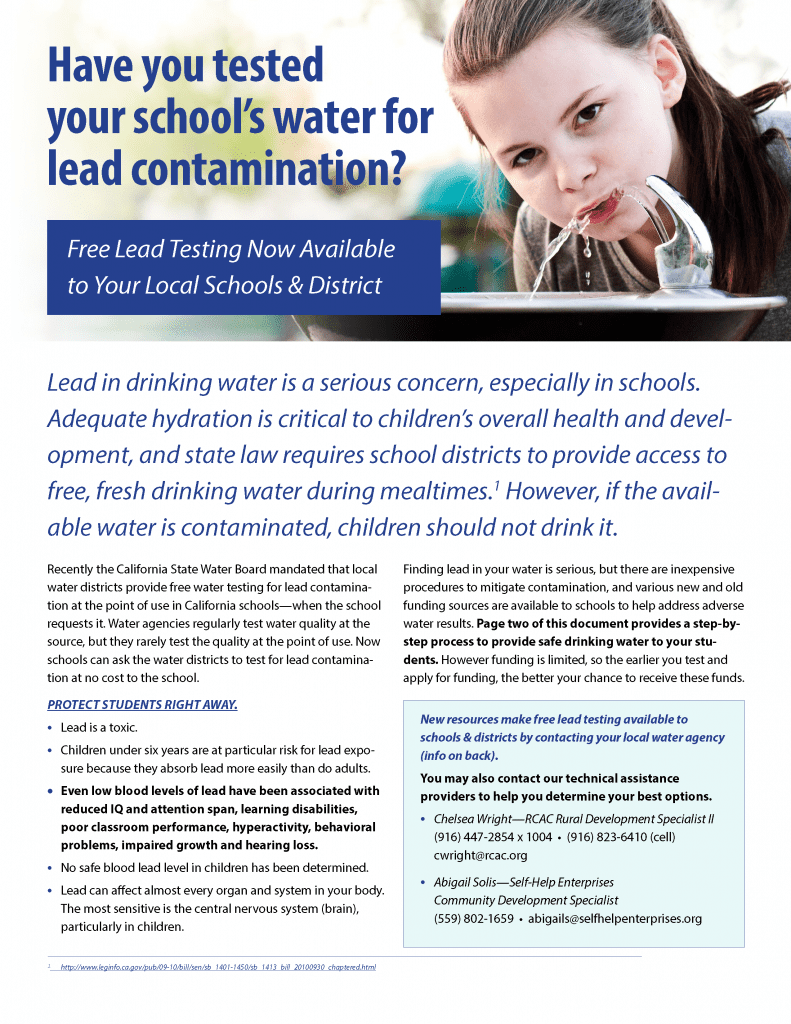
For guidelines on lead sampling, schools are referred to the Safe Drinking Water Act (HSC 116270 et seq.), also known as “2017 Permit Amendments.”
Following testing, findings must be reported to the schoolsite and, if found to exceed the federal threshold of 15 parts per billion (ppb), conveyed to the parents/guardians of the affected students, and a water sample must be collected from where the community water supply connects to the schoolsite to determine the source of the hazardous lead concentration. In such cases, the fountain or faucet from which the sample had been taken must immediately be shut down and a replacement source of potable water provided to students (through methods including replacement of lead-leaching pipes/fixtures, installation of a water filtration system, and/or temporary provision of bottled water). Each community water system must also work with the appropriate corresponding local educational agency to prepare a sampling plan for each schoolsite requiring lead sampling.
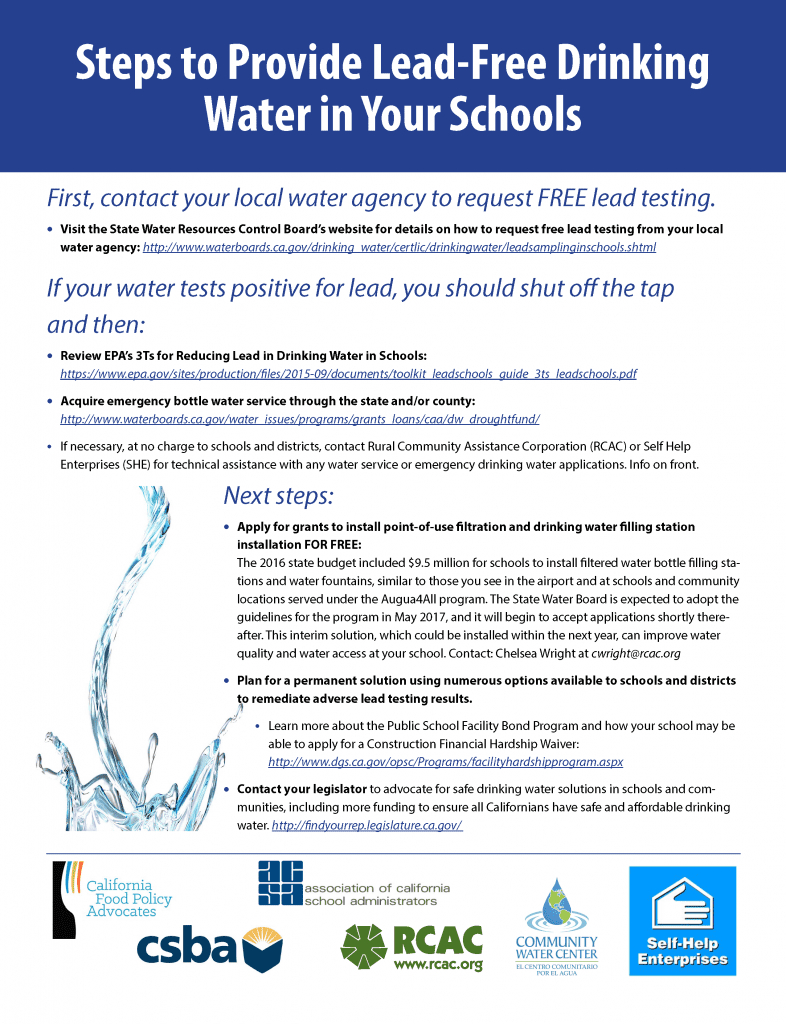
Which California Schools Must Perform Lead Sampling?
According to the California Water Boards HSC 11627 / AB 746 FAQs publication, “all California public, K-12 schools and preschools and child day care facilities located on public school property” are required to perform the lead sampling by July 1, 2019. Private schools do not have to test for lead, though they are still permitted to request testing under the 2017 Permit Amendments legislation, which requires all California community water systems to assist schools in their area of service. If a local educational agency has already requested testing from the community water system in accordance with the community water system’s 2017 Permit Amendment, then it is exempt from the lead testing mandate of HSC 11627.
If a public school has been “modernized” since January 1, 2010—that is, has had its plumbing system replaced after this date—then that school is also exempt from lead sampling of drinking water. Further, a school is exempt if its local educational agency tests its potable water system in compliance with the Lead and Copper Rule or if the school’s local educational agency has had its potable water system tested for lead after January 1, 2009 and the findings have been publicized on the agency’s website.
California Schools Slow to Start Testing
There are indications that most public schools in California have not yet performed lead sampling. The San Francisco Chronicle August 2018 article Few California School Districts Have Tested Water for Lead, Even Though it’s Free reports that two-thirds of California’s 1,026 school districts have not utilized the 2017 Permit Amendments program, through which local educational agencies would be able to have the testing paid for by their community water system (paying for any necessary plumbing/faucet/fountain repairs or alterations would be the school’s responsibility).
The August 2018 San Francisco Chronicle article also reports that, based on data submitted as of June 1, 2018, 330 districts have initiated the testing process, and more than half of them discovered at least one school with lead levels in drinking water above the 15 ppb federal standard.
According to the sampling results spreadsheet available at the California Water Boards webpage on lead sampling of drinking water in California schools, 14,714 school fountains/faucets have been sampled between February 3, 2017 and May 25, 2018; of these, in 149 cases water was found to contain lead at levels above the federal threshold. Further, 48 of these test results indicated lead concentrations of at least twice the federal standard, and 15 had lead concentrations at four or more times the 15 ppb level.
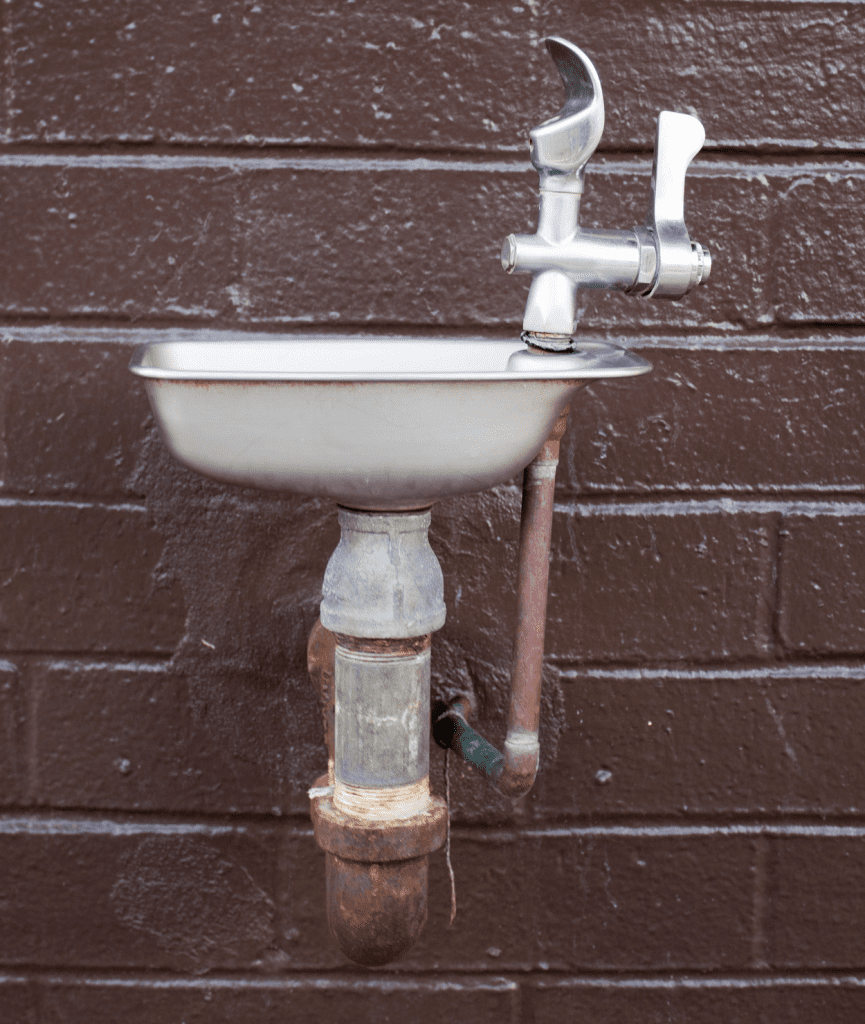 Lead sampling of drinking water in schools is important—most lead-contaminated fountains/faucets will not be this obvious!
Lead sampling of drinking water in schools is important—most lead-contaminated fountains/faucets will not be this obvious!
The rate of unsafe lead concentrations discovered in the drinking water of the California schools that have performed the lead sampling (approx. 1%) implies that there are many more hazardous fountains/faucets yet to be identified.
To view lead sampling results for California schools that have tested their drinking water, click here.
Why is Lead Sampling of Drinking Water Important?
Lead is toxic to humans and can cause serious health problems, even in small amounts. Lead poisoning carries a range of critical mental and physical developmental issues and can be fatal in extreme cases. Children below six years of age are particularly susceptible to the adverse health effects presented by lead because they absorb the toxin at a particularly high rate. The Mayo Clinic webpage on lead poisoning lists signs and symptoms of lead poisoning as including:
- Developmental delay
- Learning difficulties
- Irritability
- Loss of appetite
- Weight loss
- Sluggishness and fatigue
- Abdominal pain
- Vomiting
- Constipation
- Hearing loss
- Seizures
- Eating things, such as paint chips, that aren’t food (pica)
Babies exposed to lead before birth may be born prematurely, have lower birth weight, and grow at a slower rate. Adults may experience the following signs and symptoms:
- High blood pressure
- Joint and muscle pain
- Difficulties with memory or concentration
- Headache
- Abdominal pain
- Mood disorders
- Reduced sperm count and abnormal sperm
- Miscarriage, stillbirth or premature birth in pregnant women
Beyond lead leaching into water sources from pipes or soldering, lead can be found in paint used in buildings built before 1978, from lead bullets, in lead-contaminated soil, and occupationally for those who work in industries such as auto repair, mining, plumbing, battery manufacturing, or construction.
To learn more about the risk of lead exposure for workers in the state of California, check out the June 2018 NES article Addressing the Risk of Lead Poisoning in California.
Lead Sampling of Drinking Water: The Bigger Picture
California is now one of only eight states to pass legislation requiring testing for lead in public K-12 schools. The Environmental Working Group (EWG) reports in the article More Than 40 Percent of U.S. Schools Fail to Test for Lead in Drinking Water that, adding to the exclusion of private schools from the testing mandate, the recent California legislation also does not apply to over 10,000 child care centers.
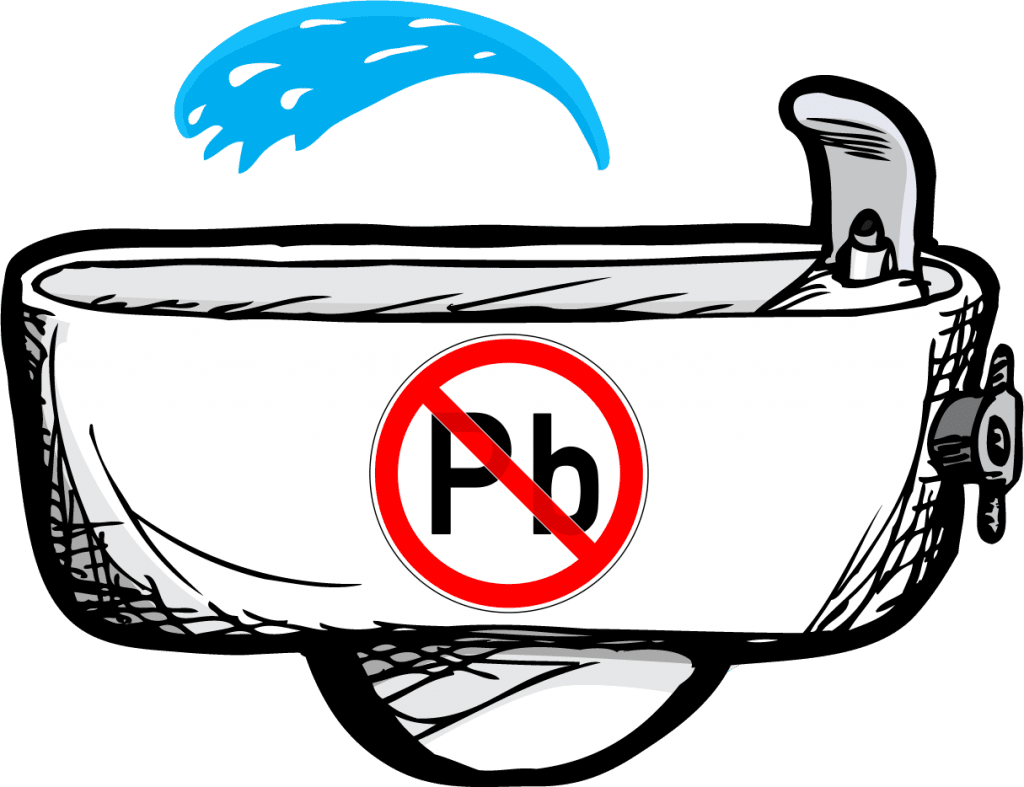
Ideally we will one day reach a point where there is no lead at all in our drinking water.
Beyond the limited scope of AB 746, many believe that the action level of 15 ppb is much too high and that there really is no safe level of exposure to lead. EWG article California Moving to Boost Lead Poisoning Prevention Programs for At-Risk Kids outlines a few currently proposed bills (sponsored by EWG) that would require that children reliably receive blood-lead testing, that the parents/guardians are notified if a child misses a test, and that the public is made more aware of lead testing for children, exposure rates, and sources of lead.
Given the content of recent and proposed legislation, it would not be surprising to observe lead exposure regulations widening in scope and growing increasingly more strict in the years to come.
References:
Safe Drinking Water Act (HSC 116270 et seq.)
California Water Boards Lead Testing of Drinking Water in California Schools FAQs
U.S. EPA Lead and Copper Rule Webpage
Story Map: Lead Sampling of Drinking Water in California Schools
San Francisco Chronicle Article: Few California School Districts Have Tested Water for Lead, Even Though it’s Free
California Water Board Webpage: Lead Sampling of Drinking Water in California Schools
Mayo Clinic Webpage: Lead Poisoning
EWG Article: More Than 40 Percent of U.S. Schools Fail to Test for Lead in Drinking Water
EWG Article: California Moving to Boost Lead Poisoning Prevention Programs for At-Risk Kids
